For sale: WW2 tanks and planes. May have been used in the D-Day landings
The Normandy Tank Museum is closing down and selling off its entire collection at auction.
For sale: World War Two tanks, armoured cars and planes. In perfect working order. (May have been used in the D-Day landings or the Liberation of Paris.)
The Normandy Tank Museum is closing down and selling off its entire collection at auction. The collection was started in the 1980s by tank expert and enthusiast Patrick Nerrant. Together with his son, he opened the museum in 2013 in Catz, a town a few kilometres from Normandy's Utah beach, where the Allies landed. The museum was built on the site of an airfield established by Allied forces just days after the area was recaptured from Nazi Germany. Unfortunately, the museum didn't attract enough visitors, and Mr Nerrant's entire collection of historic, beautifully restored war machines will be sold on 18 September by Artcurial, a Paris-based luxury car auction house. IBTimes UK presents highlights of the auction.
The Chrysler M4 Sherman was the most famous World War Two Allied tank. The model in the sale bears the colours of the 2nd Armoured Division known as "Hell on Wheels" which took part in the Cobra operation in July 1944 under the command of Generals Patton and Bradley. This battle was one the most important in the Battle of Normandy as it allowed Allied forces to break through the front and liberate western France all the way to Paris. Estimate €250,000 to €400,000. (£212,000 to £339,000).
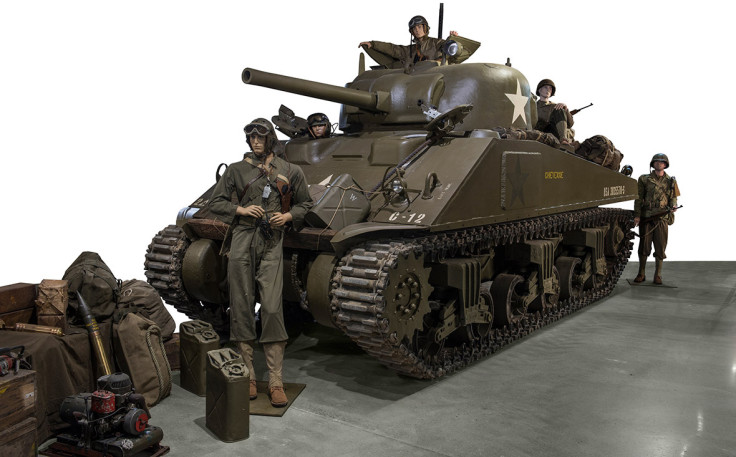
This 105mm calibre M4 Sherman tank is one of the rarest versions as Chrysler only made 800 of them during World War Two and very few survive. Bought for the museum in 2003, it has undergone painstaking restoration. This tank has taken part in numerous commemoration events such as the D-Day Landings' 70th anniversary. This M4 is in running condition and is reported to be "quite pleasing to use and drive". Estimate €200,000 to €400,000.
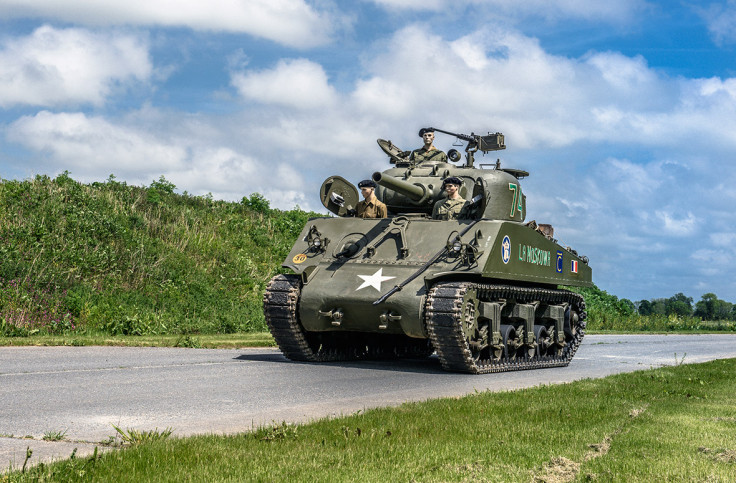
The 1942 Cadillac M3A1 Stuart is a light American tank that was also used by the British. Its nickname was a tribute to General Stuart from the American Civil War. More than 10,000 were built. This one bears the same livery as the US Cavalry's tanks during the Torch operation which initiated the invasion of North Africa on 8 November 1942. It was found in Brazil and joined the collection in 2008. The engine would have to be reinstalled. Estimate €80,000 to €140,000.

The Cadillac M24 light tank was developed after combat experience revealed problems with the M3 and M5 Stuart tanks, the most important being the weak 37mm gun. The M24 had a gyro-stabilised 75mm cannon and advanced suspension that contributed to its formidable performance in all terrain. The model on sale had its baptism of fire in January 1945 in the middle of the Ardennes Offensive. After the war it had a movie career, appearing in many films and television productions. It is fitted in its Battle of the Bulge configuration, and the equipment on the M24 is representative of the harsh weather conditions that prevailed during this battle. The cramped space inside the tank forced the crew to store wool blankets and duvets on the outside shield, with their personal belongings carried in knapsacks on the turret. Estimate €150,000 to €250,000.

The GKN Sankey FV-432 was an armoured transport carrier used by the British Army with modifications for various uses such as infantry transportation, ambulance, radio vehicle, etc. It was designed to deposit up to 10 men on to the battlefield, following the progress of the tanks. The FV-432 had technology that can still be seen as contemporary and relevant: internal fire protection, recycling and filtration of indoor air in case of NBC (nuclear, biological and chemical) attack, external and internal intercom and amphibious crossing capabilities. A powerful and simple armoured vehicle, it was reliable and required very little maintenance. The museum's FV-432s were often used for taking visitors on noisy off-road rides that give an idea of their power. Estimate €10,000 to €20,000.
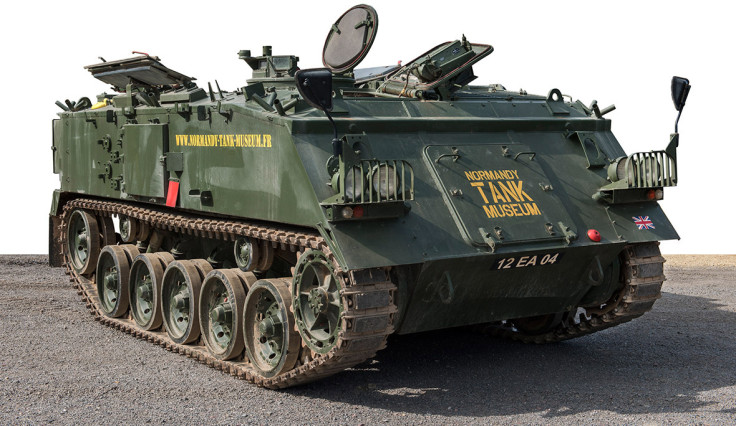
A 1942 BMW R75 750cc motorcycle with rare sidecar that bears the Afrika Korps' 1942 North African campaign livery. As the spearhead of General Rommel's reconnaissance troops, this motorcycle and side-car set was unbelievably robust and reliable. The R75 model had a unique transmission system and was by far the best suited machine to cross dunes and the desert plains of Africa. The model on sale comes with equipment specific to the North African campaign: three leather bags, weapon holder and MG34 machinegun, a headlamp cover designed to protect from sandstorms, two leather seats and the Afrika Korps motorcyclist's personal equipment. Estimate: €35,000 to €45,000.
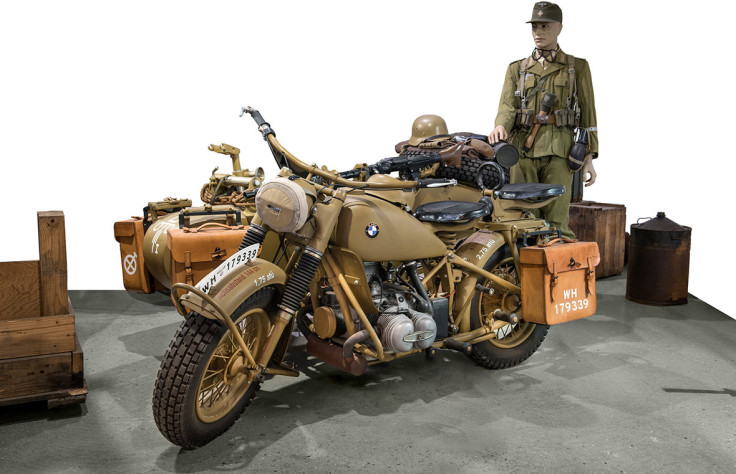
The Harley-Davidson WLA was produced to US Army specifications and was based on an existing civilian model. Demand for the WLA was so high that in 1943, Harley-Davidson stopped selling bikes to the public and only produced units for the Allied forces. One variant of the bike was more BMW than Harley. The American government had ordered Harley-Davidson to design a motorcycle that could be used in extreme conditions such as the African desert. Harley saved time and costly research by producing a very close copy of the BMW R75 used by German forces. Estimate €15,000 to €25,000.
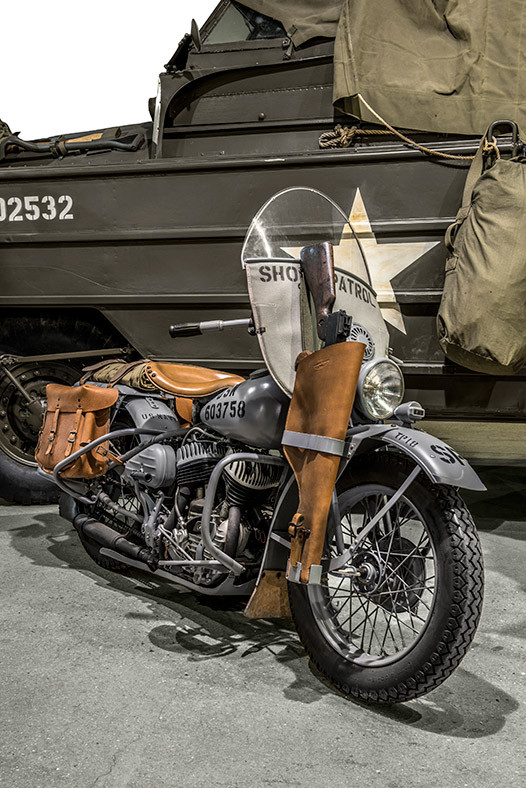
After the First World War, English factories were asked to design and manufacture new motorcycles for the British Army. In 1935, Norton delivered the single-cylinder 450cc Model 16. Within a year it had become the most widespread motorcycle in the British Army until 1941. Although replaced by the BSA M20 in late 1943, it was widely used by Anglo-Canadian troops during the Battle of Normandy. Norton continued producing the 16H until 1954, and it was used in the Belgian, Danish, Greek and Dutch armies. The model on sale has been reconditioned with original spare parts and details: original handles and webbing saddle bags, double leather seat, brass speedometer, Bakelite Norton plate on the tank, blackout headlight. Estimate €5,000 to €10,000.
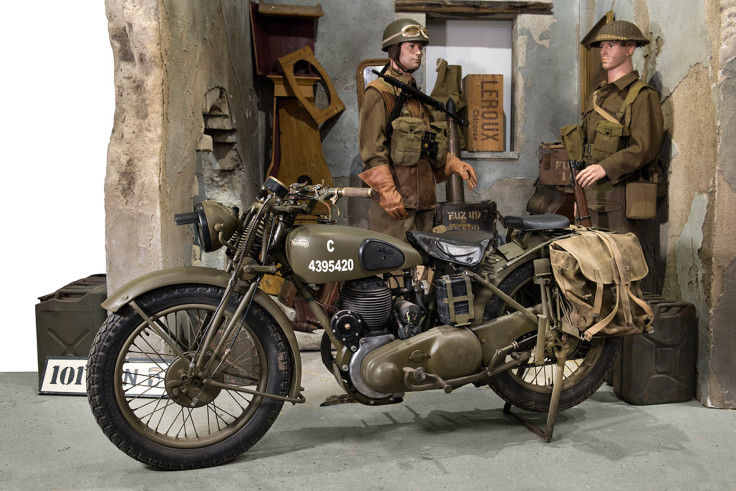
The Food Machinery Corporation LVT (Landing Vehicles Tracked) a type of amphibious disembarking vehicle used by the US Navy during the Second World War. Initially designed as transporters for ships, they quickly evolved into assault unit and vehicle transporters in preparation for D-Day. The GIs often referred to the LVT as the Amtrack: a contraction of Amphibious Tractor. It reached a maximum speed of 32km/h (12km/h on the water) and could accommodate up to 30 passengers. These innovative machines were used in different conditions and were a solution to many amphibious landing operations. Mostly used on the Pacific Front, only a few units took part in the D-Day landings. They are therefore hard to find in Europe, but the museum has two LVTs that were discovered in the Gironde region. Estimate €40,000 to €60,000.
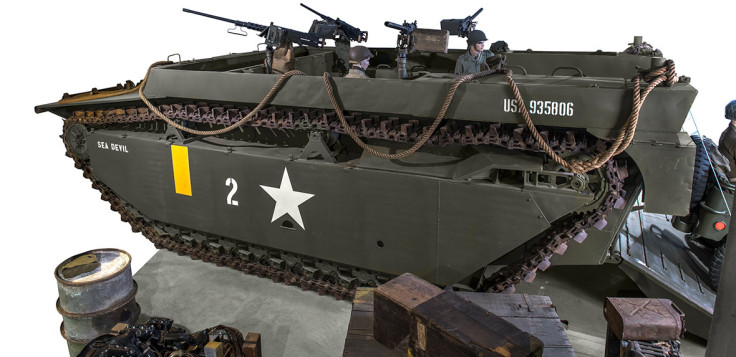
This 1943 Willys Overland Motors Jeep MB was the first Jeep to have joined the collection. It was bought at a time when it was easy to find MB models in good condition since they had been kept in storage by the French Army. Fully operational, it was reconditioned and serviced in order to be identical in every way to its original factory condition. It was used in the museum's D-Day scenery in which it rolled off an LVT4 on Utah Beach. The canvas doors were attached in order to prevent water from flooding the cabin. Estimate €15,000 to €25,000.
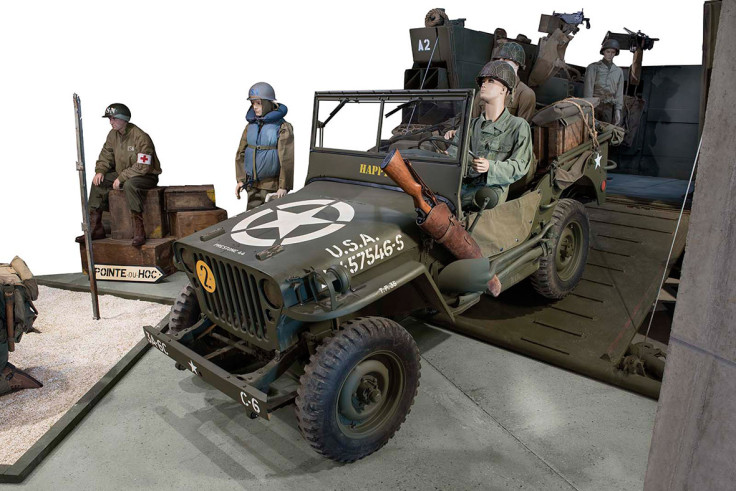
The Dodge WC-56 and WC-57 Command Car series was used for officers' transportation as well as for reconnaissance missions. It could carry five seated people and was equipped with a special table allowing the officers to follow the combat operations on a map. Basically a bigger, more comfortable Jeep, its weight made it less manoeuvrable, and its distinctive profile made it a target. The model in the sale has never been restored nor disassembled: it was simply reconfigured in US Army specifications. Estimate €25,000 to €35,000.
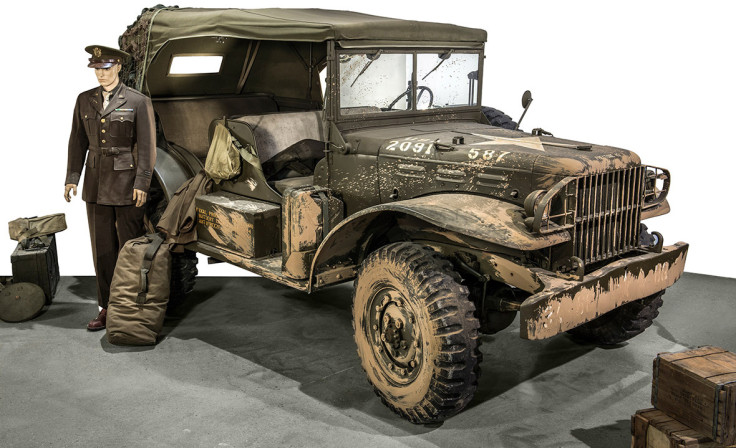
The Dodge WC54 was used as the American Army's standard ambulance from 1942 to 1945. It could transport four wounded soldiers lying on superposed stretchers, or six if they were able to sit upright. The model in the sale is in very good original and working condition. It has never been restored, simply returned to its original configuration. All of the typical ambulance accessories are present and in original condition: spotlight, roof ventilation system, heating, leather seats, Bakelite steering wheel, stretchers and straps, etc. Estimate €15,000 to €25,000.

The silhouette of the General Motors Corporation GMC CCKW is widely recognised and its history makes it one of the symbols of the French Liberation alongside the Jeep Willys and the Dodge WC51. Nicknamed "Jimmy", this vehicle played a key role in the success of Allied transport and logistics. After the war, it contributed to the reconstruction of France and Europe as it served on construction sites, as tow-trucks or even in farms. Estimate €15,000 to €25,000.

The General Motors Corporation DUKW was the amphibious version of GMC's CCKW and AFKW military trucks. Thanks to its model name, DUKW, it was quickly nicknamed the Duck. They were used during the operation to capture a fortified clifftop German artillery battery at Pointe du Hoc in Normandy. Estimate €40,000 to €80,000.
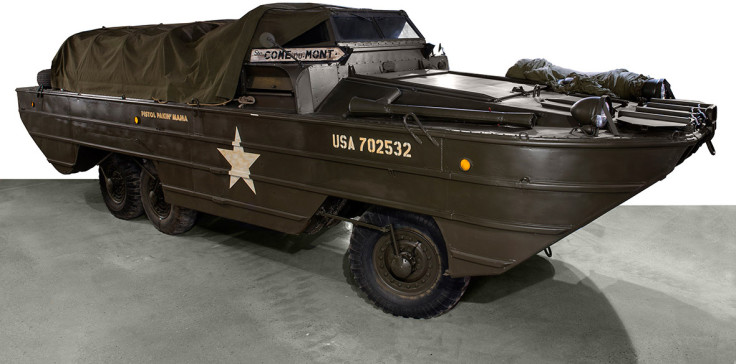
Officially called the 105 mm Howitzer Motor Carriage M7, the English gave the self-propelling Howitzer the nickname Priest because the circular shielding protecting the 50 calibre machine gun resembled a priest's pulpit. Powerful, reliable and quick, the Priest was very efficient and performed well throughout world war two. The museum's M7 is built on a Sherman M4A3 frame and has a Ford GAA V8 engine developing 500bhp, making it the most powerful version ever produced. The paint job of the model on sale is a faithful reproduction of a war photograph of a Second Armoured Division M7 Priest crossing the city of Carentan during the battle of Normandy in 1944. Estimate €100,000 to €180,000.
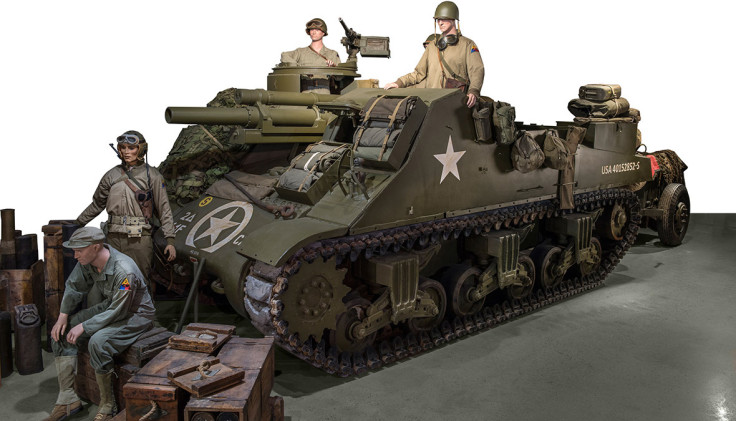
Designed in 1942 to compensate for the lack of armoured reconnaissance vehicles in the US Army, the Ford M8 was nicknamed the Greyhound as it was quick and silent, thanks to Ford's technological advances. With a top speed equal to that of the Jeep, it could sneak into enemy lines. Estimate €50,000 to €80,000.
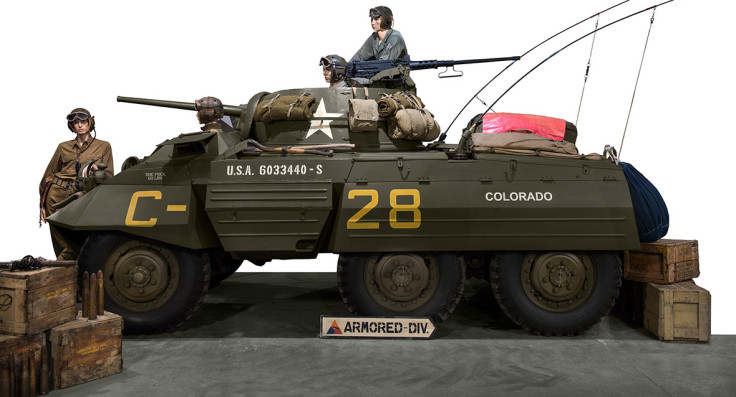
The White-Autocar M3 Half-Track was the standard armoured transportation vehicle of the American Army, which was the only army to be totally mechanised during all of World War Two. The M3 model could transport 13 soldiers very close to the combat zone. However, its thin shielding made it vulnerable to enemy artillery and shrapnel. The model on sale comes with a wide range of equipment used by transportation crews, including field beds, tent, haversacks, US mail bags, military ration boxes, telephone, medical kit and ammunition boxes. Estimate €30,000 to €50,000.

The Attelage Hippomobile IF8 was a horse-drawn carriage used by the Wehrmacht during the Second World War. The model on sale was found in Normandy by a collector who then gave it to the museum. Estimate €3,000 to €6,000.

The 1942 Volkswagen Kübelwagen Typ 82 Kfz.1 was basically a militarised Beetle. On 22 June 1934, Adolf Hitler granted Ferdinand Porsche a 20,000-Reichmark monthly subsidy in order to finance the development of a car the German people could easily afford. This vehicle was called "the car of the people" by its designer, or as we know it: Volkswagen. The project was code-named Type 60, but would soon be commonly referred to as the Beetle. The first units of a military vehicle based on the the Beetle's chassis were delivered to the German army in December 1939. It was officially named the Type 82, but the soldiers nicknamed it 'Kübelwagen' – literally tub car. About 55 000 Type 82s were built. Estimate €25,000 to €45,000.
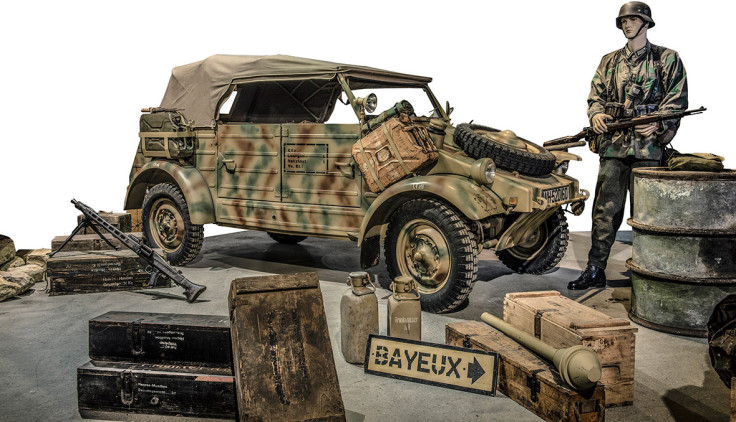
In 1940, the US Army launched a competition in order to equip its Air Force with a light reconnaissance plane. Beechcraft, Fairchild and Piper participated in the project. Eventually, Piper's Cub was chosen and in 1941 40 units were ordered and swiftly delivered one week later. Pilots praised the aircraft but nicknamed it the Grasshopper because it often bounced back up during landings. The plane on sale bears the colours of General Leclerc's 2nd Armoured Division in memory of its role in the liberation of Paris. On the 24th of August 1944, Captain Jean Callet and Lieutenant Etienne Mantoux flew a Piper Cub low over the occupied city's police headquarters to signal to the Resistance that Franco-American troops were coming. Estimate €20,000 to €50,000.
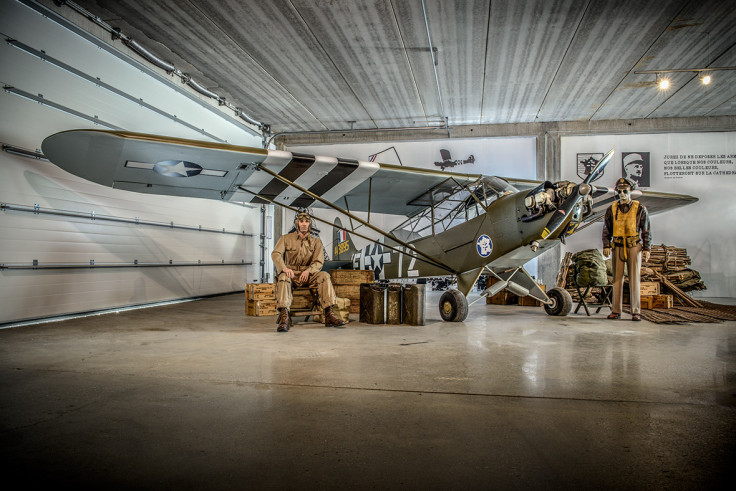
The Normandy Tank Museum Sale, presented by Artcurial, will be held on 18 September 2016 in Catz, Normandy. The items can be viewed from 15 September. Full catalogue can be seen online here.
© Copyright IBTimes 2025. All rights reserved.






















